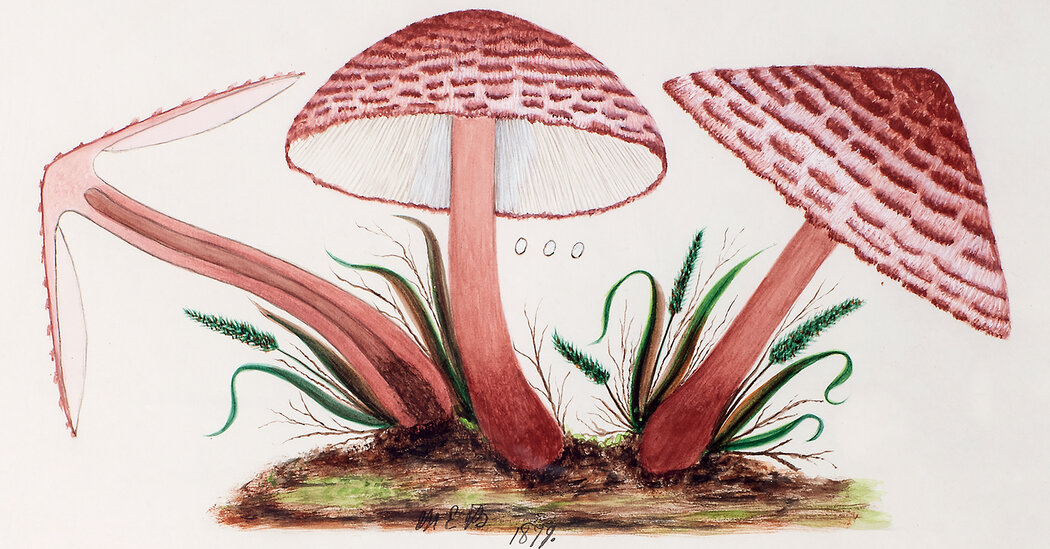On an early summer day in 1876 near Druid Hill Park in Baltimore, a middle-aged woman carrying three large, putrid mushrooms repulsed fellow travelers riding a horse-drawn trolley car.
Even wrapped in paper, the stench of the aptly named stinkhorn mushrooms was overpowering, but the woman stifled a laugh upon overhearing two other passengers gripe about the swarm of flies around them. The smell didn’t bother her. All she cared about was getting the specimens home to study them, she would later write.
This was Mary Elizabeth Banning, a self-taught mycologist who, over the course of nearly four decades, conducted seminal research on the fungi of her state, Maryland.
Miss Banning characterized thousands of specimens that she found in Baltimore and the surrounding countryside, identifying 23 species new to science at the time.
A gifted artist, she collected these observations into a manuscript called “The Fungi of Maryland.” It consisted of 175 stunning watercolor plates, each an accurate yet intimate portrait of a given species, along with detailed scientific descriptions and anecdotes about collecting the mushrooms.
The manuscript was Miss Banning’s life’s work, and she yearned to see it published. But it ended up in a drawer at the New York State Museum in Albany, forgotten for almost a century.
